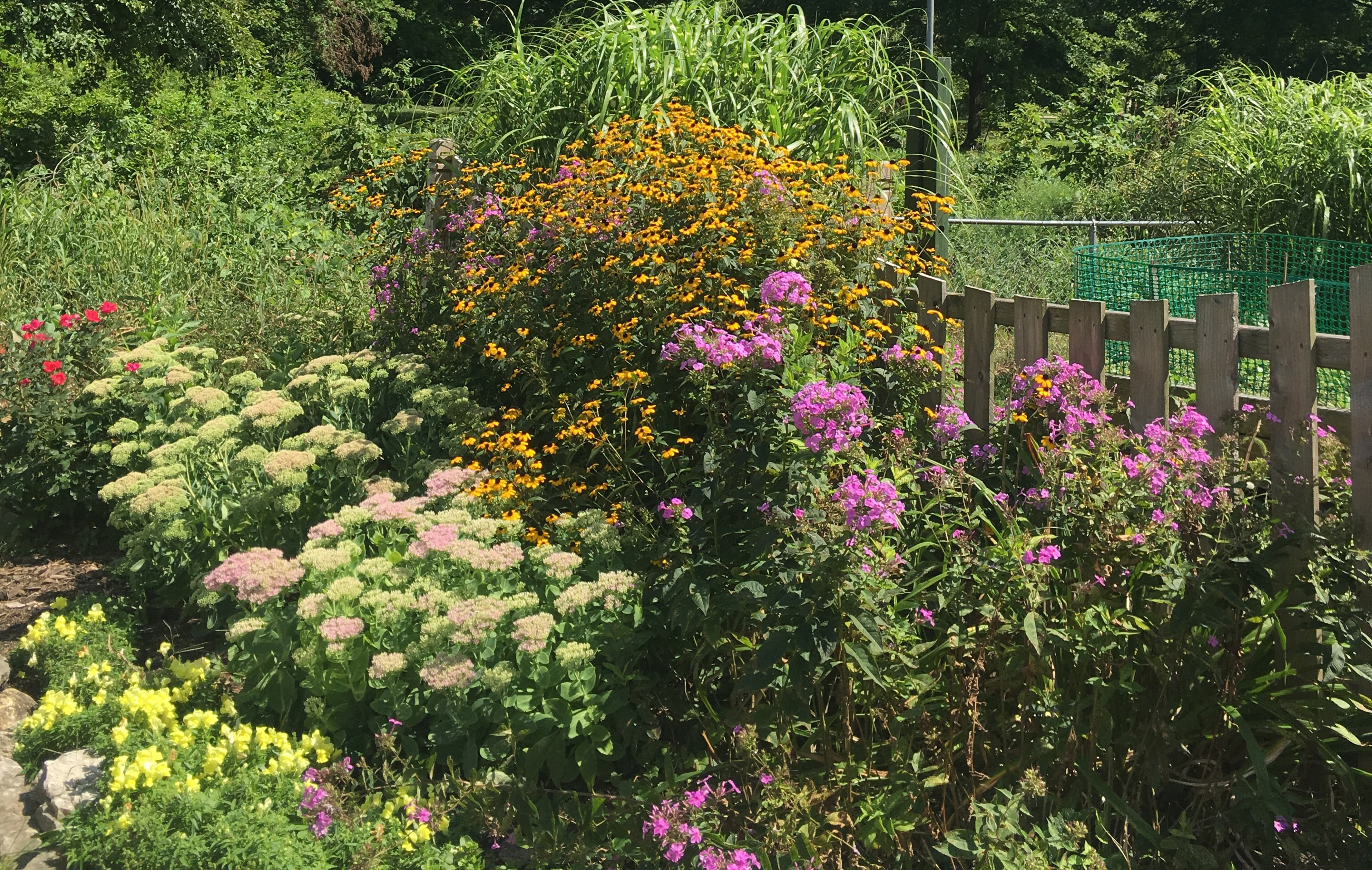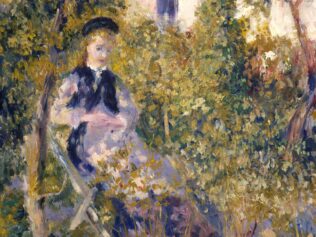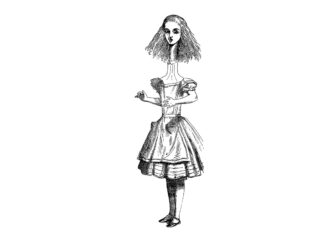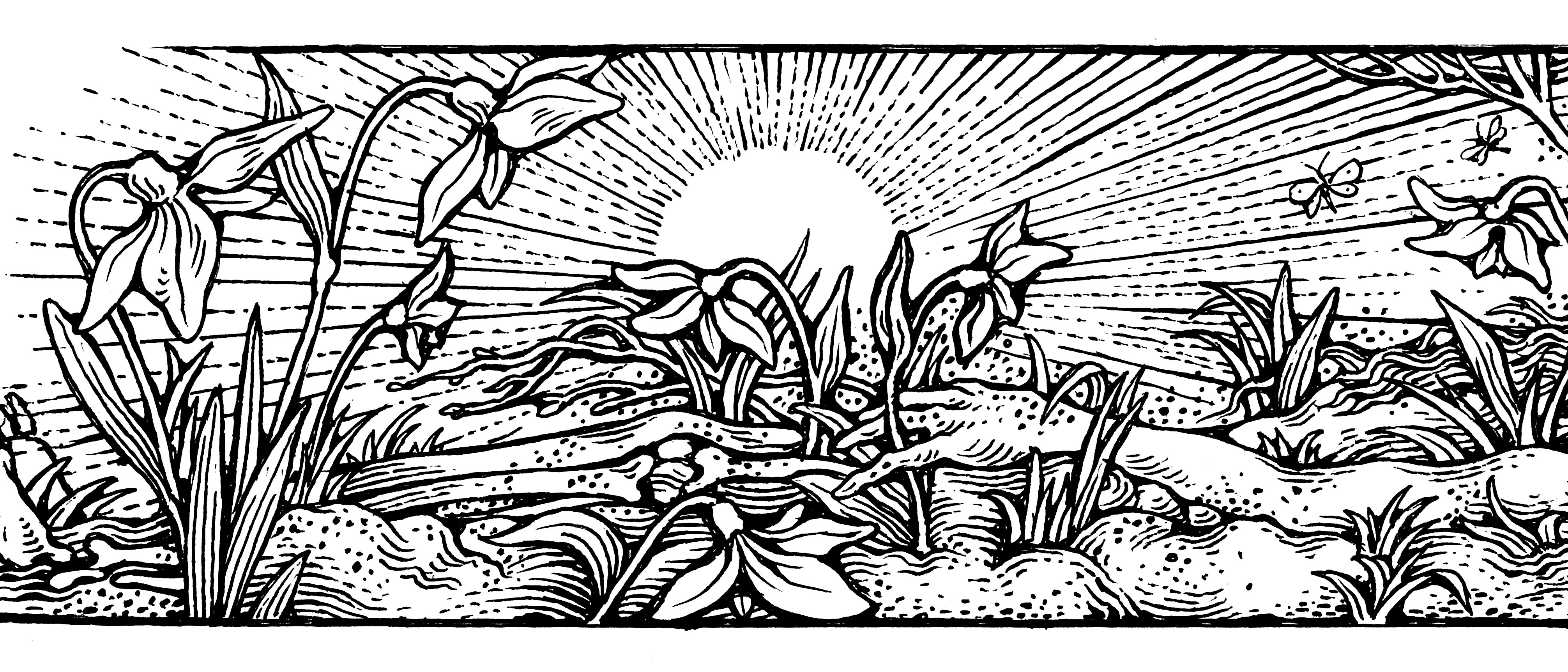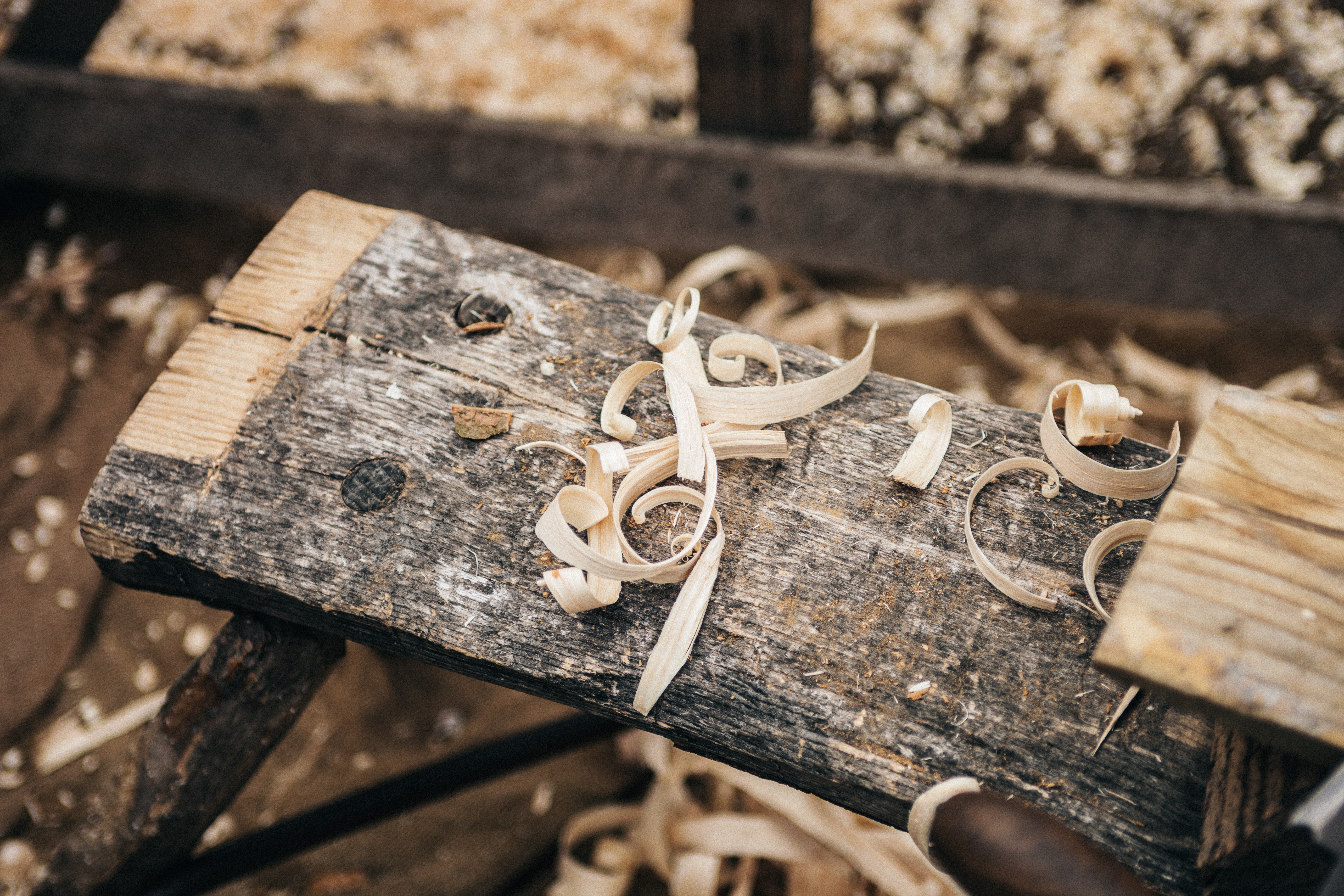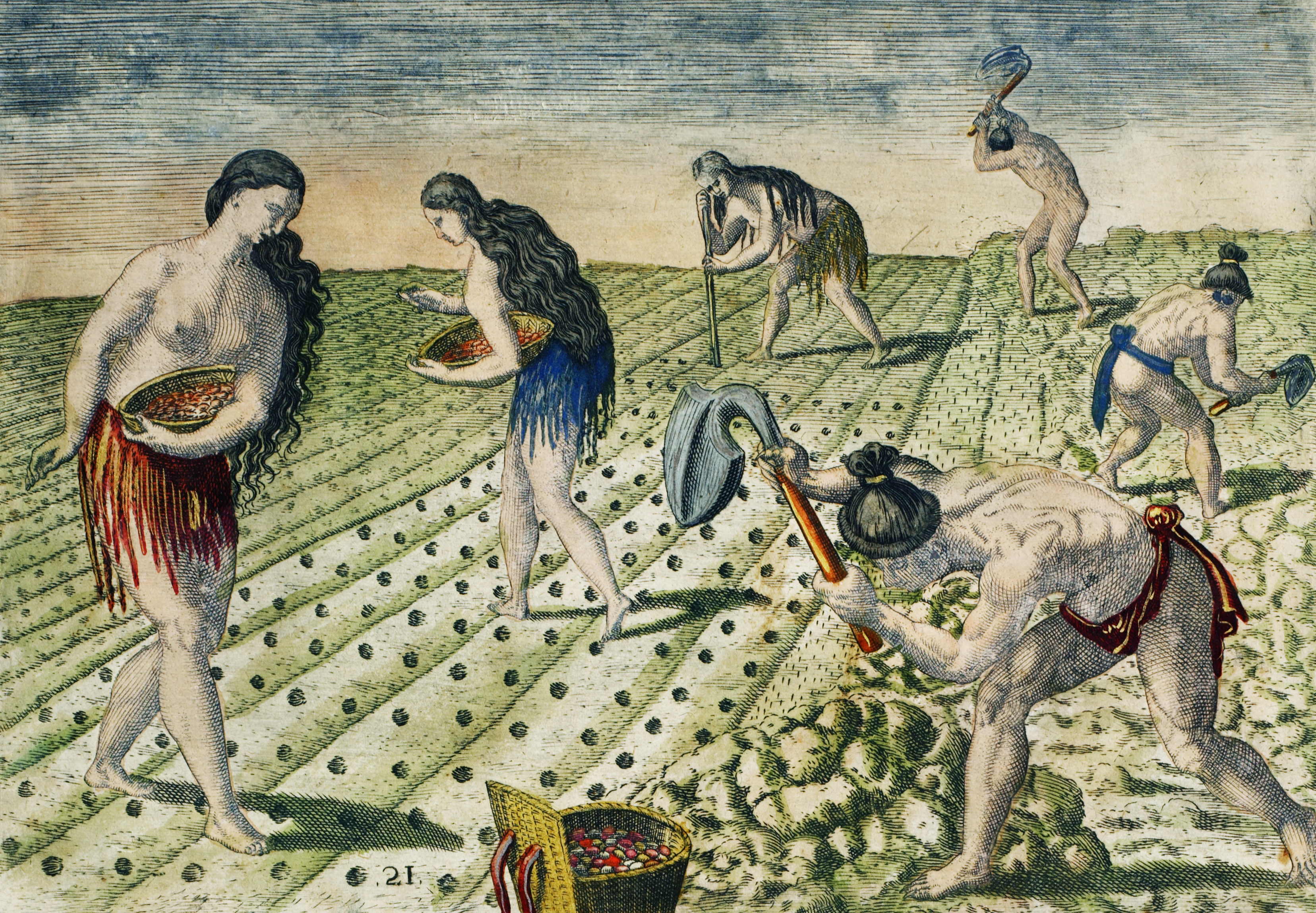
Her clinical job is supporting doctors suffering from stress and burnout. But her heart, soul and mind have always been filled with seeds, shoots, sprouts and buds. Over 30 years ago, Sue Stuart-Smith and her husband Tom Stuart-Smith, the celebrated garden designer, created the wonderful Barn Garden on Serge Hill in the English county of Hertfordshire.
As a psychiatrist and psychotherapist, Sue Stuart-Smith is convinced that connectedness with nature can radically improve human health, mood and self-confidence. Her book The Well-Gardened Mind analyses the relationship between gardening and mental health. It is scientific, personal and poetic. It has already become a bestseller – also outside the UK – and was listed as one of the 37 best books of 2020 by The Times.
Anna Tatarska: Gardening, working with soil and being close to nature can do wonders for the human brain. I think it’s safe to say this assumption is the starting point of your book The Well-Gardened Mind. How exactly does nature influence us?
Sue Stuart-Smith: The first thing you have to remember is that humans evolved as hunter-gatherers. The natural world is our habitat; our brains, bodies, our immune system are tuned into certain stimuli in the natural world. When we’re completely deprived of nature, we suffer. There’s all the research – such as that conducted by Roger Ulrich – which shows how directly human bodies are linked to nature. For example, looking at green, non-threatening, beautiful landscapes, maybe with some water. What the great painters painted. For our remote forebears in pre-history, such an environment would have signalled: Green vegetation. Water. Somewhere to sleep safely. This is a good place for survival! And we still react to them in the same way. That signal is translated into our body and can be physiologically tracked – the heart rate slows down, blood pressure drops. The parasympathetic nervous system goes into relaxation, rest and digest mode. It happens within minutes. After about 30 minutes, people’s levels of salivary cortisol starts to come down. In one experiment, they had gardeners digging in their allotment and the comparison group was reading a book there. Those digging had a larger drop in cortisol. It’s also been shown in population studies, comparing similar demographic and socio-economic groups, where one group was living with some green space around them and the other with none. The cortisol levels are healthier in people living near the green space! There is a real body of research showing how we need signals from the natural world to thrive.
We often think of the brain as a computer. You say that a much more suitable metaphor would be to think of it as a garden. Why?
Metaphors come from somewhere. There are networks in the brain, so there’s some basis to the computer analogy. But, I would say, fundamentally it’s quite a dangerous one. We work with machines so much, we work with technology so much. If we rely on that metaphor, we then slip into thinking about ourselves as machines. We are part of nature, but we stop thinking of ourselves in this way. Another thing is, when something goes wrong with your computer, you feel completely powerless. You need an expert. So, if you slip into thinking about the mind like a computer, there’s something disempowering about it. Because our neurons can actually grow and recover – there can be renewal. Obviously, a machine can be fixed much more quickly; with the brain you have to be patient, you need to take time.
These days ‘taking time’ doesn’t seem very popular. We like a ‘quick fix’.
The increasing pressure on everything to happen faster and quicker is certainly something I notice in the National Health Service, here in the UK. In my field of expertise, mental health, the treatments get shorter, everything is quicker with a greater turnover. Shorter treatment is fine for some people, sure. But it’s all a part of this ‘quick fix’ strategy that doesn’t really work – neither in treating the human psyche nor in gardening. What I describe in the book is that recovery often happens along with growth in the garden; with the seasons, the cycle. I write about patients who spend a year in a garden. Time is what people often need to recover from a big trauma or a big loss.
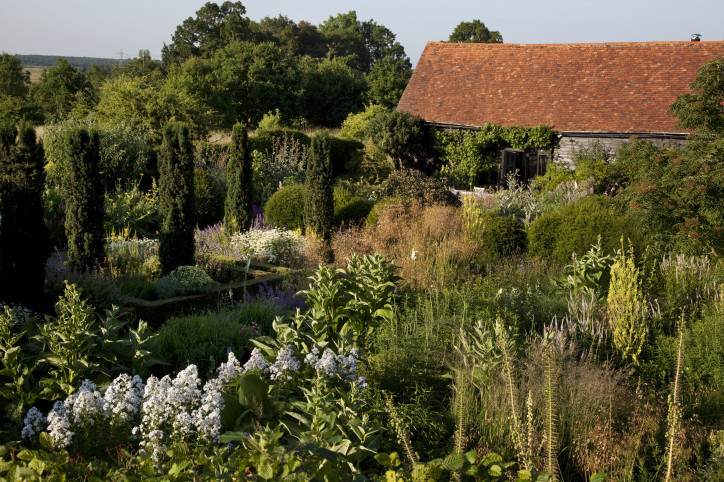
The pandemic has affected our access to healthcare – seeking other ways to enhance or protect our health seems more important now than ever.
The pandemic in the northern hemisphere started in spring, and we could see how psychologically helpful that was for many people. Especially that there were those awful fires in Australia just before and this affected global consciousness, as it went on for so long. The sense of doom and damage has gone too far. In the pandemic, the human world has been put on hold, everything has stopped. We’ve been unable to travel, weddings and family gatherings have been cancelled, shops closed. But the natural world hasn’t been affected, it’s carried on. You could almost see it recovering in some places. People had a view of the Himalayas that they’d never previously had in India. Here in Hertfordshire, we live between the airports, and usually see vapour trails. Suddenly the skies were so clear! People were posting about deer coming to the city centre. There was a feeling like: Yes, we’ve damaged the planet, but there’s a force we can work with.
I write about how, throughout history, in times of crisis – be it wars or natural disasters – people often turn to nature. In America, there was a great rush of people buying seeds. The garden centres couldn’t keep up – they sold out! Watching that and being a part of that – because I too sold more seeds than usual, and they had a greater significance – it was almost uncanny. People need the sustenance they can get from nature’s powers of renewal. You can see that with the pandemic. In The Well-Gardened Mind, I describe war veterans recovering from trauma. Nature’s peace, the regularity of healthy growth, can be so important when you’re going through something which is the opposite of that.
But it can also be helpful to those who are not suffering from any particular psychological disorder. Including yourself.
The very beginning of the pandemic, April and May 2020, that was the frightening bit. Our youngest son, who’s a doctor, was working in the accident & emergency department, which is not that far away from where we live. My day job, my clinical job, is supporting doctors suffering from stress and burnout. I wasn’t on the front line, but I was hearing what was going on. I always start growing my tomatoes inside the house, because it’s too cold early on. But last year I kept them on my windowsill much longer. It was almost like a ritual: open my curtains every morning, see the tomatoes have grown just a little bit more over the night… It was so stabilizing to have that as the first thing you see, rather than the news.
The seasonality of nature, its resilience and restorative power, is being threatened by global warming. Psychologists around the world are dealing with climate anxiety more and more.
The American Psychological Association says that climate anxiety is a “chronic fear of environmental doom.” Connecting with nature can actually be one of the most helpful things for it. Gardening, too, if it is ecological – no chemicals, no pesticides. There are so many ways: growing food locally, cutting down food miles. In my book, I write about Freud, who, at the end of his life, realized that when you’re stopped in your tracks, you become aware that actually there is a wealth of life around you, even in a small garden. I think that in the pandemic people have been socially isolated and have spent a lot of time in parks and gardens. Millions of people, it must be, really experienced those effects that people often get in a hospital garden or a hospice.
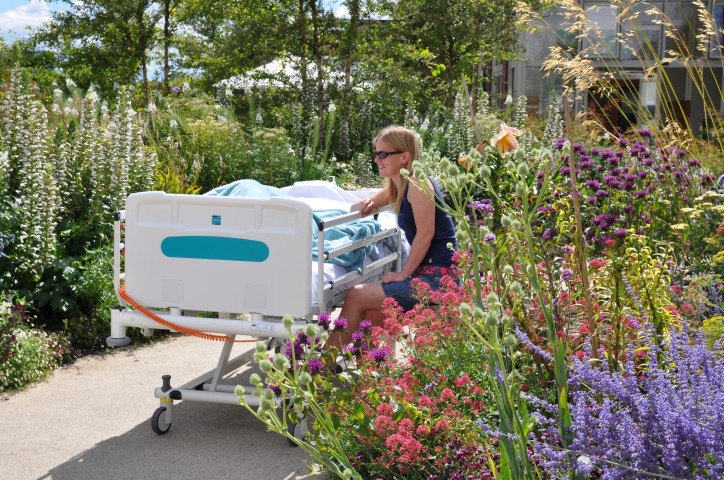
Community gardens are becoming a thing all around the world. They can take unexpected forms, like the rooftop Brooklyn Grange farm, or the aquaponic Urban Organics in St. Paul, Minnesota. In Warsaw, we also have a similar project, called Bujna Warszawa (Abdundant Warsaw). Why is this idea so vital?
One thing I describe in the book is the ‘social bridge effect’ of nature. I quote the John Hopkins Institute on that. Look at Manchester, where women started Incredible Edible, an urban gardening project that aims to bring people together through actions around local food. They did not have a huge farm, they were planting all around the town, in little planters, tiny plots. Fundamentally, it is about regaining some sense of belief in the ability to grow something. I actually think these kinds of more community-based projects – providing a safe setting that’s creative and empowering – are something that will re-emerge from the pandemic. Gardens can provide a sense of safety.
It can be clearly observed in prisons that implement hortitherapy (horticultural therapy) as a part of their resocialization programme. Over a decade ago, one such programme called Psycho BHP was launched in a Polish prison in Czerwony Bór.
Hortitherapy can do wonders in PTSD therapy, it can positively influence managing your anger or aggression. But it can provide more than that. For example, when prisoners are in the garden, the rules from inside the prison don’t apply. They can just relate to each other as human beings, with a kind of freedom and trust – a real trust. Inside of prison, people are very suspicious of each other, different races never really mix or talk to each other, whereas in the garden they can. There’s a levelling effect that people often describe when you’re working with the earth. We return to something simpler in ourselves.
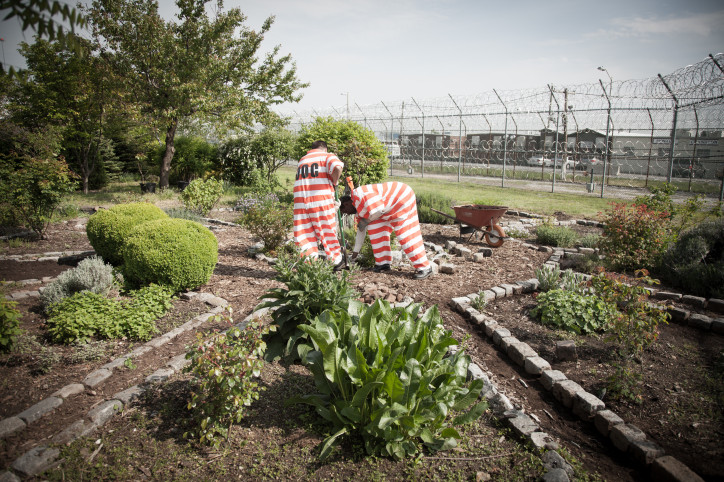
Hortitherapy can be helpful in working through past fears and traumas, but what about future ones? Like fear of death?
What gardening puts you in touch with is the return of spring. The fundamental sense of continuity of life. Freud described the return of spring as the nearest we can get to a sense of something eternal in our lifetime. The sense of symbolic survival that we can experience through nature is also something that American psychiatrist Robert Jay Lifton writes about. In gardening, there is always a sense of looking forward. You’re planting things that may outlive you. Gardens are full of life and beauty, but there is no denying that things die there. So gardening can be a very gentle way of coming to terms with the inescapability of death, decay and loss. In gardening, there is a relationship through which we are connected to things so much larger than ourselves, no matter the faith or lack thereof. Green burial grounds with compostable caskets and trees planted over them are becoming more and more popular.
Cities, with their dense development, are not a friendly space. It might be increasingly difficult to create a garden near a hospital.
In the city, it is crucial to have strips of vegetation that connect together. It’s not that people would move freely among them, because some of them may be private gardens. But the little mammals, the birds and the insects can move along these little corridors. That’s very important if you want to make the city thrive in terms of wildlife. A lot of hospitals in the UK were traditionally built in parks or gardens, especially in the Victorian era. Now they’ve been built over, turned into car parks, bits of land were sold off to raise money. That space has been gradually eroded. But actually, we now see that trend being reversed. To build a new hospital in England, there now has to be a garden in it. So there is a recognition that there’s real value in it. For example, Great Ormond Street Hospital has created more than one garden within the last five years. It’s right in the centre of London, but they’ve worked out some space. It’s a centre of excellence for rare children’s conditions, families often live there for a long time. Not having a garden was awful. Having done it, they’ve realized staff needed their own protected space as well. So now one garden is exclusively for staff, providing all the anti-stress effects and an escape from the clinical environment.
In The Well-Gardened Mind, you write about ‘nature blindness syndrome’. Even people who have contact with it simply do not see it for what it is.
Our educational system does not pay enough attention to that issue. Playing in nature can be really beneficial for children – Richard Louv writes about this in Last Child in the Woods. It’s not that all of this [pointing to her smartphone] has to be totally damaging, but if there’s nothing to balance it, we have a problem. It’s not like everything is pre-packaged and pre-given in nature. Children start to construct their own little world. Make dens, gather up sticks. An empty box gets the imagination going. It comes back to the antidote of commodifying everything. I am passionate about seeds and I think it’s very important for children to have that experience of sowing seeds and watching them germinate. It is a source of life; there is something magical about it. It seems so improbable – this little thing looks so dead and dry, and yet there’s so much encoded within it. If we give it the right environment, it will flourish. That, to me, is the metaphor that we need to help our planet to recover.
Sadly, no matter what we do, as long as governments don’t cut carbon emissions the future will keep looking bleak.
Carbon emissions are a difficult, geopolitical issue. But fostering biodiversity is something that ordinary people can do an awful lot about. There’s still quite a lot of people, perhaps in the older generation, that like to garden in what was a traditional way: very neat lawns, clipped edges, tidy-tidy. But over the last 15-20 years, the popularity of the natural look –what’s now called ‘wildlife gardening’– has been growing. It means gardening specifically to attract insects, pollinators and birds. If you have experience of gardening, and you understand how beautifully nature recycles everything, and then you look at our plastic rubbish, you begin to think: That doesn’t make sense! There’s some really important research by Miles Richardson from the University of Derby that came out after my book was published. During the pandemic, he followed people who were walking, going out in nature, and tracked how it helped their mental health. What it showed is that not only is being outdoors important, but what they called ‘connectedness’ to nature – finding meaning in it, really noticing and appreciating it. We teach kids at school about the human body, but forget that humans are a part of nature.
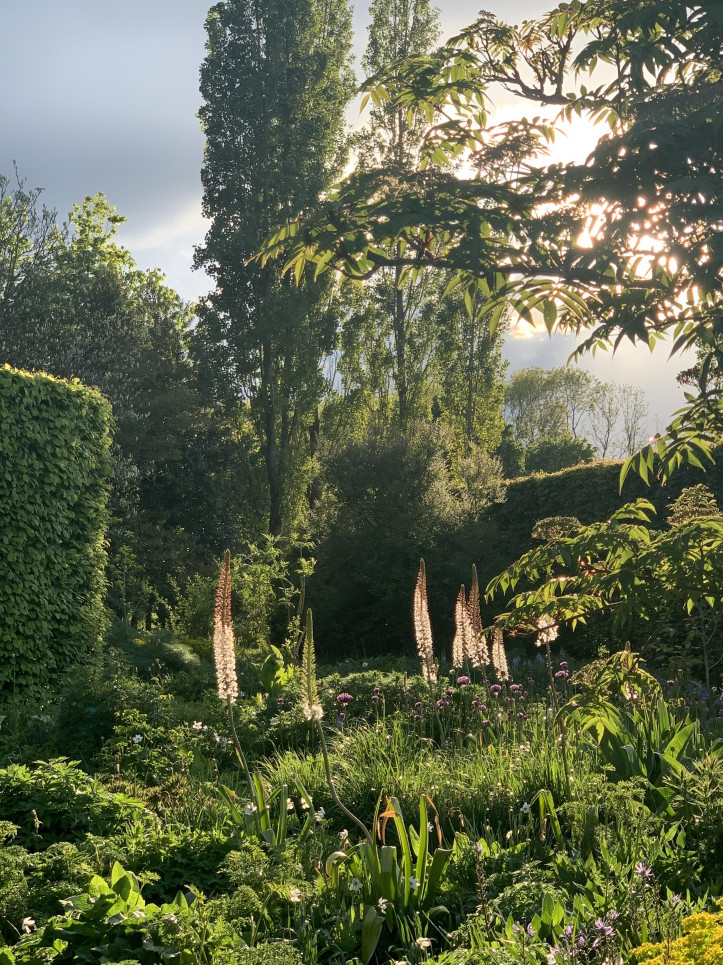
My ‘balcony’ is about 30-centimetres wide, planting anything seems like a stretch. No community gardens in sight. Should I, following the example of my 80-year-old neighbour, illegally garden a plot in front of my block, creating a fence out of old plastic bottles?
Maybe hang some planters? For some people, house plants are great. That sense of caring, nurturing, the greenery around you… There is a kind of companionship people can get from being with plants. In the book, I write about the American psychiatrist and psychoanalyst Harold Searles, who studied how patients recovering from a nervous breakdown can be supported by a relationship with plants. A great example would be Goronwy Reese, a writer and academic, who at the end of the 1950s had a very serious accident and spent a lot of time in hospital. There was a tree, a little garden outside of his window: “So completely did I become a part of it that when from time to time I fell asleep it was as if the trees stretched their long green fingers into the ward and took me up and enfolded me until I woke refreshed by the cool touch of their leaves.”
These days there are so many ‘plant mamas’ and ‘plant daddies’ on Instagram that you can have the impression that people choose plants over humans.
Freud loved flowers, he used to say they have neither conflicts nor emotions. It actually links to the work of Searles. Human, interpersonal relationships contribute a huge amount to how we develop and grow; they are the building blocks, if you like. But they’re also very complex, very demanding. Sometimes we need respite from that complex human world. Pets give people that and so do plants. They’ve become like pets, people brag about them, talk to them. Anything can be commodified; anything can be fetishized. It’s important not to go too far in that relationship, so it doesn’t become a substitute for other types of relationships we need to function healthily
I don’t have green fingers. All those perfect, spotless monsteras on Instagram make me feel like a failure.
Let me just mention that I don’t believe in green fingers being something we are born with. With a bit of practice, anyone can grow. While we have been isolated, social media has become more prominent. With no in-person contact, we have become caught up with screens more than ever. Many people feel more watched. All day long, there’s something happening on your phone, some notifications. It’s not like we can switch off from it very easily. I think it is incredibly dangerous to start second guessing yourself, giving people what you think they want. I did not want to think like that when writing my book. I did not want it to be preachy; I wanted people to experience something, to take them on a journey. It was the coming together of my professional and personal life. My family story, my own experience, but also scientific research. It came from deep in my heart. If I burdened myself with thinking how many people would read it and would give it a ‘like’, I would have wasted so much time. This is all you one do in the hall of mirrors we live in.
Parts of this interview have been edited and condensed for clarity and brevity.


